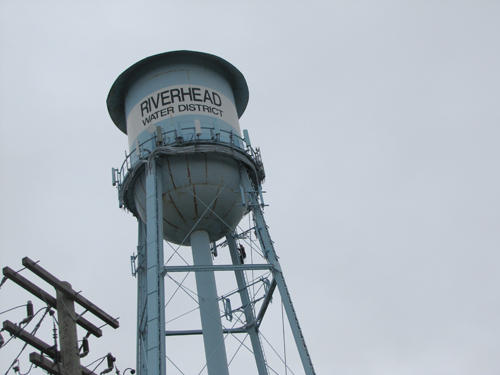Riverhead Town offered $627K state water grant

Riverhead Town is one of two municipalities on Long Island that has been offered $627,327 in state grant funding to replace lead water service lines in residential areas — if they want it.
Towns selected for the funding aren’t required to spend the funds, but have two years to decide.
On July 26, Gov. Andrew Cuomo announced $10 million in funding through the New York State Department of Health to continue a statewide initiative to eradicate lead in drinking water in residential areas.
Municipalities chosen must administer the funds to homeowners to confirm the presence of a lead line and coordinate replacement. The town would pay for the work and submit relevant vouchers and invoices to the state for reimbursement.
Supervisor Laura Jens-Smith said Thursday that while she’s excited to hear the town was selected, she wants more insight into how the program could work. The town would have to identify eligible areas and could prioritize homes with children, she said.
“We have a little bit more research to do there,” she said.
Officials evaluated municipalities to find qualifiers based on median household income, number of homes built before 1939 — when lead service lines were widely used — and the percentage of children with elevated blood lead levels.
“It’s costly for homeowners to replace [lead service lines,]” the supervisor said.
How — and if — to spend the grant funding has become a larger issue to Yvette Aguiar, the Republican seeking to unseat Ms. Jens-Smith in November.
She held a press conference during the Town Board work session Thursday urging the supervisor to accept the grant award.
In a statement, Ms. Aguiar said the state grant was awarded in order to mitigate a public health concern.
“This grant is critical to maintaining a safe and healthy community,” she said. “We need to utilize this grant as soon as possible to ensure the necessary upgrades to our water district are implemented.”
Contaminated drinking water becomes a concern when service pipes containing lead begin to corrode. The United States Environmental Protection Agency estimates that contaminated drinking water accounts for 20% or more of a person’s total lead exposure.
The agency set the maximum contaminant level goal for lead in drinking water at zero because “lead is a toxic metal that can be harmful to human health even at low exposure levels.”
Pregnant women and young children are particularly at risk since the effects of lead occur at lower exposure levels in children than in adults. Lead exposure has been linked to damage to the nervous system, learning disabilities and impaired hearing, according to the EPA.
According to guidelines set forth by the state, the funding can be put toward engineering and design fees, legal and municipal fees and construction. Municipalities have the option of using their own work force or private contractors to perform the work.
The program is part of the state’s $2.5 billion Clean Water Infrastructure Act approved in 2017. The only other municipality selected this year was the City of Glen Cove, which also received $627,327. The program has already awarded $20 million to offset replacement costs in prior years, officials said.
In a statement, State Health Commissioner Dr. Howard Zucker said the initiative can make a “real difference” in the future of public health. “Eliminating exposure to lead, in all its forms, is essential to healthy development,” he said.
Ms. Jens-Smith said the chance to get the lead out of the pipes at no cost to homeowners is an enticing opportunity.
“We are absolutely looking to move forward,” she said. “It’s a win-win for the community.”

